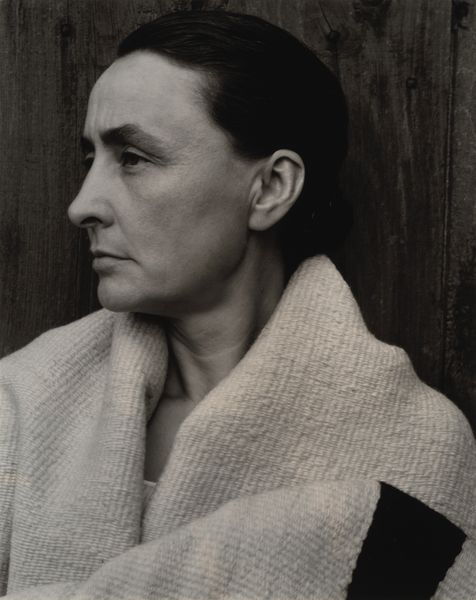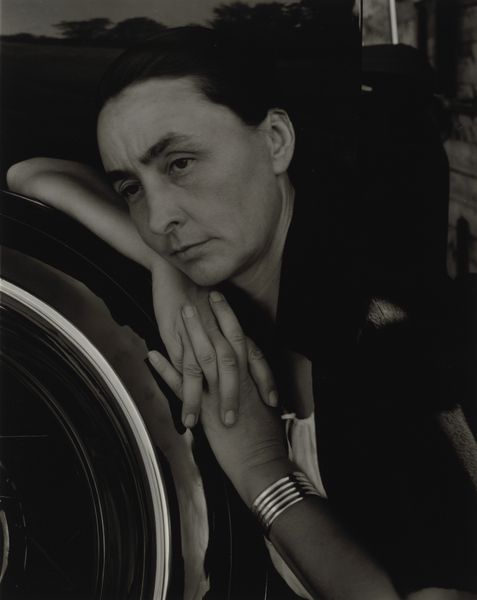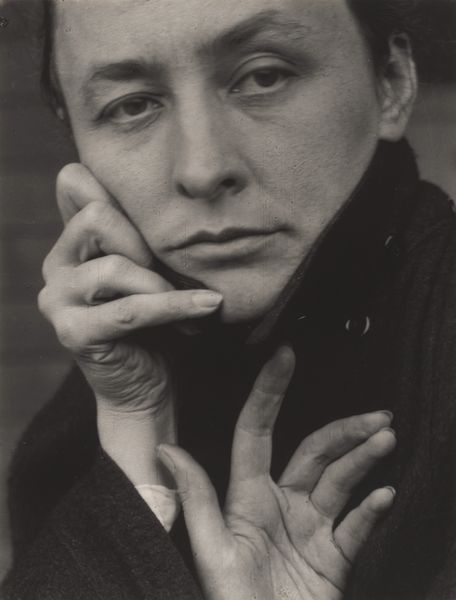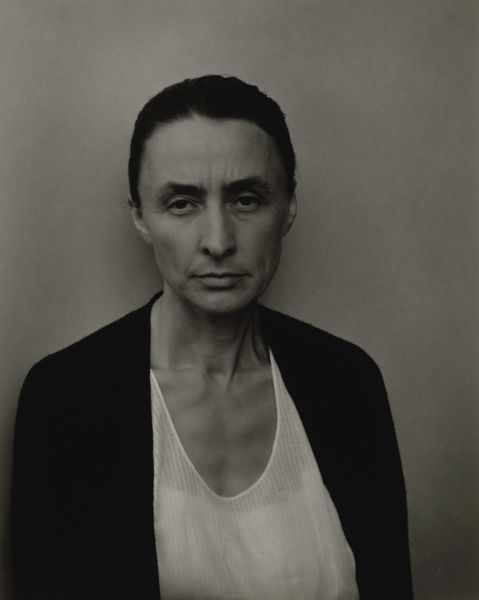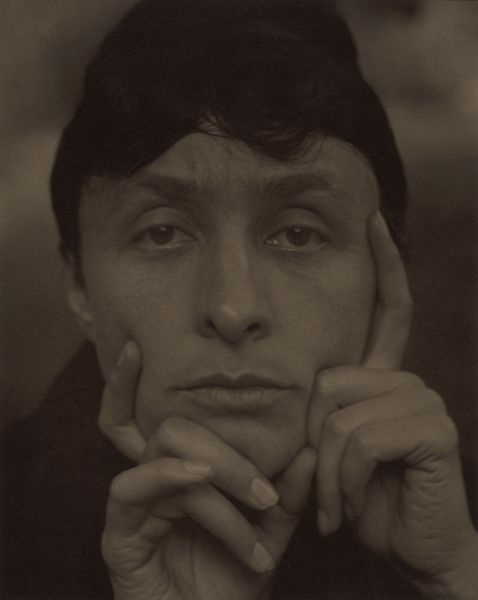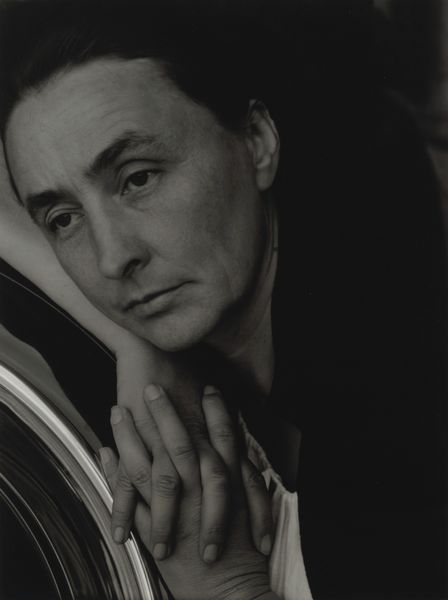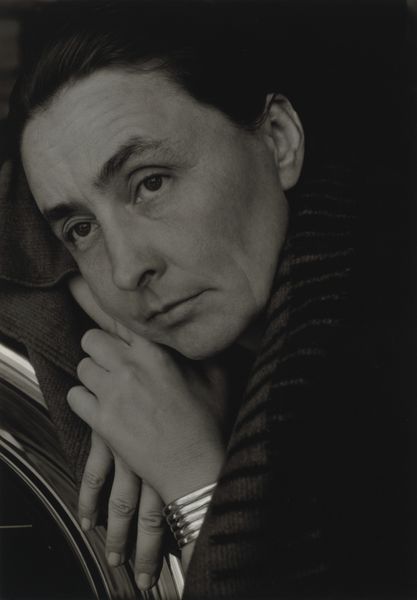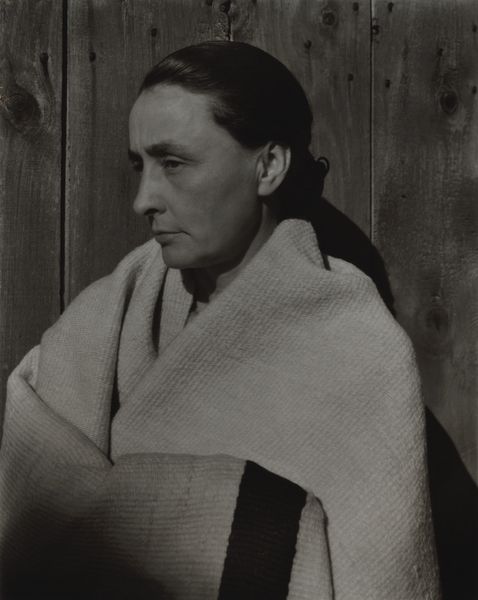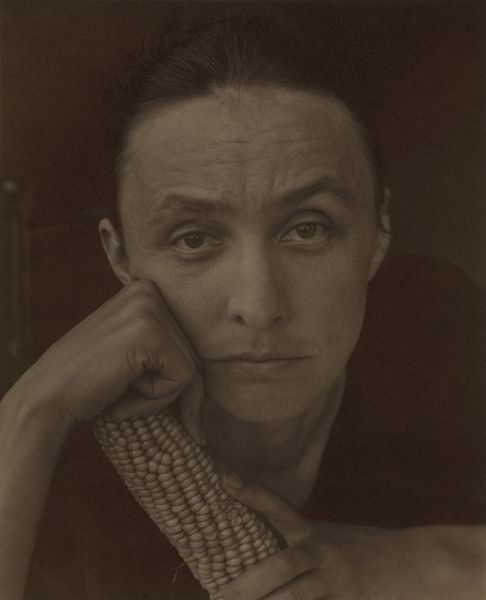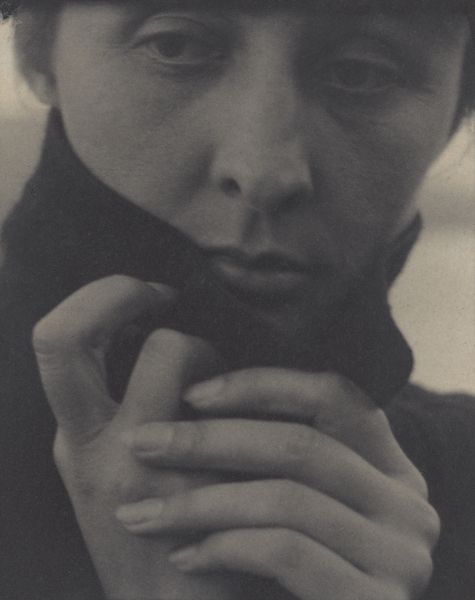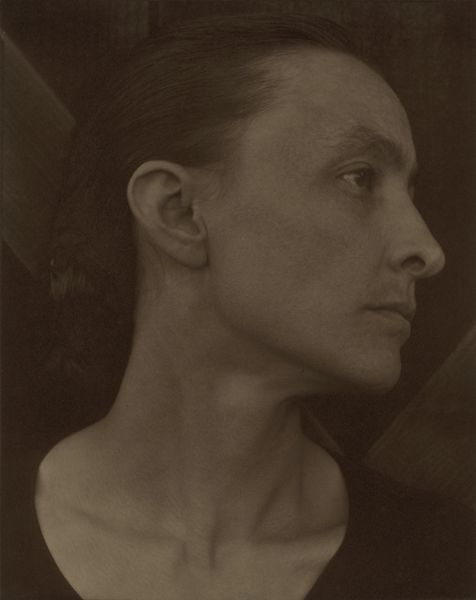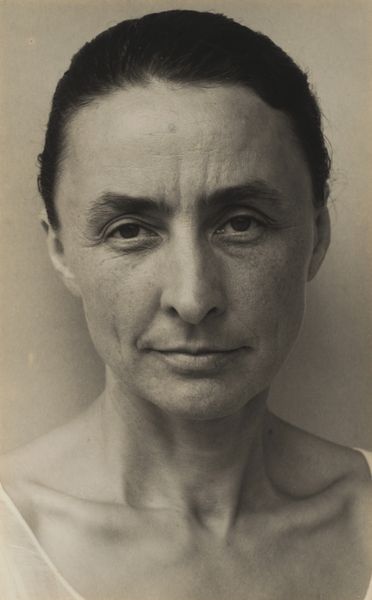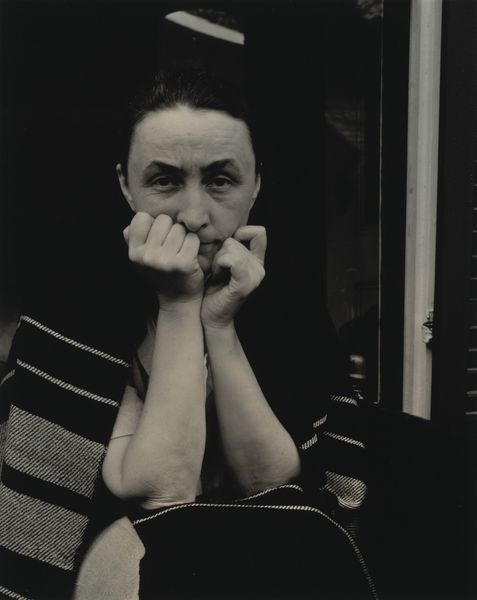
photography, gelatin-silver-print
#
portrait
#
pictorialism
#
portrait
#
photography
#
gelatin-silver-print
#
modernism
#
realism
Dimensions: sheet (trimmed to image): 23.9 x 18.4 cm (9 7/16 x 7 1/4 in.) mount: 52.9 x 39.9 cm (20 13/16 x 15 11/16 in.)
Copyright: National Gallery of Art: CC0 1.0
Curator: Today, we’re looking at a gelatin silver print photograph by Alfred Stieglitz, simply entitled "Georgia O'Keeffe," created in 1931. Editor: My immediate impression is one of serene dignity, though perhaps tinged with a sense of melancholy. The monochrome palette emphasizes the interplay of light and shadow, highlighting the texture of the wool wrap she’s wearing. Curator: It's worth remembering that Stieglitz and O'Keeffe were not only husband and wife but also two titans of the American art world. Stieglitz, through his galleries and publications, championed modernism in America and played a pivotal role in shaping O’Keeffe's career and public image. He created countless portraits of her, many of which, like this one, constructed her as both muse and modern woman. Editor: You can definitely see the visual weight given to form in the composition. The tonal range is so carefully modulated; the way the light caresses her face draws you into her gaze, which is both piercing and ethereal. The geometric rigor introduced by the dark strip on the blanket plays nicely with the softer textures and organic lines of her face and hair. Curator: There's a fascinating power dynamic at play. These photographs, while ostensibly celebrating O'Keeffe, were also, in many ways, a product of Stieglitz's vision. He controlled the narrative through these images, shaping how the public perceived her. There's something inherently problematic in that control, yet undeniably impactful in its contribution to O'Keeffe's iconographic status. Editor: True. But within that constructed image, there's still something very authentic. Look at the planes of her face, the slightly furrowed brow, it conveys such depth of feeling and intelligence. And consider the composition as a form itself: the tonal distribution of dark vs light create visual dynamism and reinforce both subject and artistic intentions. Curator: Thinking about Stieglitz’s broader influence, these portraits did more than just immortalize his wife, they advanced photography as a fine art, securing its place within cultural institutions. Editor: Exactly, by exploring texture, tonal contrast, and composition to give the images a certain weight. I was captivated by that right away! Curator: Well, thinking through the dynamics and impacts that this image has socially makes me appreciate even more how much it showcases the artist as both a persona and as a product. Editor: I agree. Hopefully viewers can now see not just a portrait, but a carefully orchestrated symphony of lines, forms, and context.
Comments
No comments
Be the first to comment and join the conversation on the ultimate creative platform.
